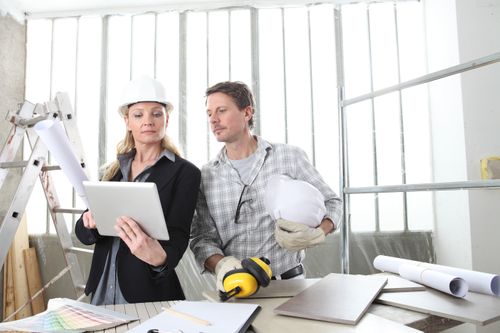Bridging the Gap: The Impact of a Strong Architect/Designer and Contractor Partnership
In every project, a diverse group of professionals is involved, comprising the client, builder, architect, and interior designer, with the possibility of additional experts like Structural, Mechanical and Electrical engineers, landscape architects, or lighting designers, depending on the project’s complexity.
A successful project typically commences with a well-designed plan. Once the design and architectural plans are complete, the client usually hires a general contractor separately to oversee the construction. The contractor then assembles a team of subcontractors, including project managers, administrative support, vendors, and more.
This conventional approach often results in multiple layers of separation between the design team and the construction team, leading to potential issues arising from miscommunication, missing information, or unclear instructions. Such conflicts can significantly disrupt or delay the project.
However, involving the builder early in the design process and advancing collaboration between the architect or interior designer and the contractor can effectively address many problems. By working as a unified team, potential issues related to site conditions can be discovered and addressed early on, reducing the need for Requests for Information (RFIs) to the Architect and preventing cost increases for the project owner.
The Significance of a Positive Architect-Contractor Relationship:

In the world of construction, both architects and contractors play crucial roles in bringing a project to life. While their perspectives sphere of responsibilities may differ, effective & open communication between them is essential for a successful and smooth process. Whether it’s a commercial construction endeavor or any other project, cultivating a positive relationship between architects and contractors holds immense power and importance.
Advantages of a Positive Architect-Contractor Relationship:
An affirmative and well-established bond between architects and contractors paves the way for a smooth construction project, from its initial stages to final completion. With effective communication and mutual understanding in place, potential disagreements are minimized, or better yet, prevented altogether, ensuring the project advances efficiently through its various phases.
Effects of a Constructive Architect-Contractor Relationship:
The significance of a positive architect-contractor relationship becomes evident when challenges arise during the construction process. While architects aim to maintain their design vision, contractors may often identify, due to site conditions, unforeseen limitations. In such situations, the strength of the architect-contractor relationship plays a vital role in finding resolutions. By fostering open communication and mutual respect, both sides can professionally address conflicts, leading to effective problem-solving and timely improvements in the final results. A positive working dynamic between architects and contractors ensures a successful and harmonious project journey.
A strong and successful architect-contractor relationship is built on the pillars of transparent, open communication, and genuine mutual respect. Moreover, the value of prior experience working on multiple projects together should not be underestimated. Essential to this partnership, contractors must ensure continuous updates to the design team during the construction process to avoid mistakes and get confirmation and approvals on changes. Similarly, architects should acknowledge the practicalities of field conditions and promptly respond to Request-for-Information (RFI) from the contractor. Timely feedback and clarifications play a crucial role in keeping the project on track and achieving ultimate success.
In conclusion, a positive and nurtured architect-contractor relationship is vital for the smooth execution of construction projects. By working together, addressing challenges professionally, valuing & trusting each other’s expertise, architects and contractors can achieve phenomenal outcomes and navigate potential roadblocks on the path to completion.



